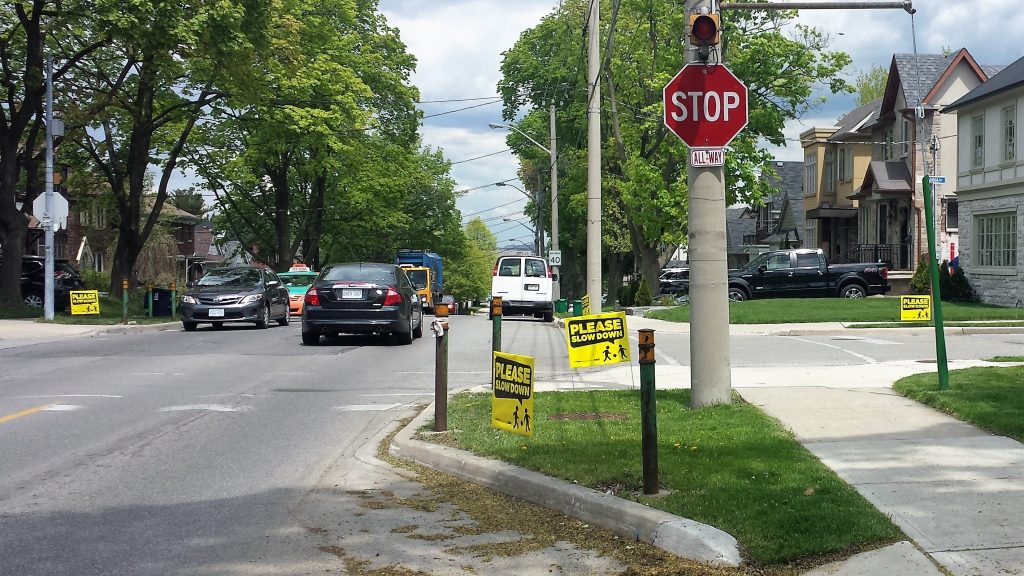POLICY
All-Way ‘Stop’ Sign Control
All-way stop sign controls are not meant to be used to control speed, but are a form of intersection control.
All-Way ‘Stop’ Sign Control
All-way stop sign controls are not meant to be used to control speed, but are a form of intersection control.
An all-way stop uses stop signs in all directions to control traffic. Often, a school crossing, pedestrian crossover, or traffic control signal can be used instead of stop signs. However, installing stop signs has been shown to improve safety in some instances.
Introducing an all-way stop is subject to a number of ‘warrants,’ or criteria, including:
- Collisions: average number of collisions per year
- Volumes: number of pedestrian and vehicles using the intersection in each direction
- A number of others that City staff will consider. View the policy for a complete list.

